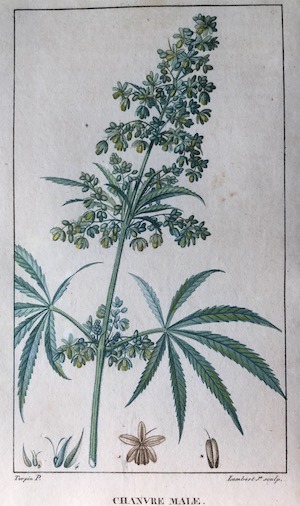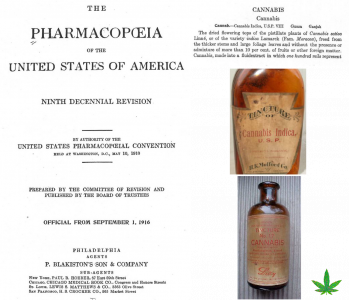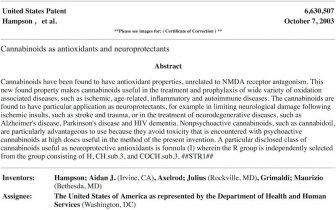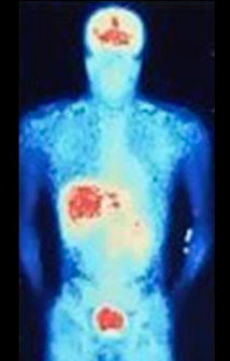Cannabis Manifesto: Dissolve the Stigma!
Dissolving The Stigma Against Nature's Oldest & Safest Medicine: a cannabis manifesto by The Dà Má Collective 大 麻
This manifesto is the prelude to our upcoming book, The Newbies' Guide to Medicinal Cannabis. We are releasing this manifesto in advance of our book to address a current topic of critical importance (“the stigma”) which is popping up increasingly in the media and in conversations with friends, family and colleagues:
The time is long since overdue, within individuals and society as a whole, to dissolve the stigma that surrounds the cannabis plant.
As a global society, it’s high time we rectify, restore and re-normalize healthy positive attitudes & perceptions towards cannabis: as a benevolent life-saving medicine, and a time-&-tradition-honored means of enhancing relaxation, good humour, inspiration, and communion with one’s faith. While much progress has been made, unfortunately (in some minds more than others) a background stigma remains: the vestigial notion that cannabis use is somehow aberrant, abnormal, disgraceful or ‘naughty.”
This stigma is unfortunate at both macro and micro levels: macro level, the stigma slows down efforts (by the legislative system & the healthcare system) to restore cannabis to its integral and time-tested role as a commonly-used fundamental botanical medicine.
Micro-level, the cultural stigma many of us have inherited can play a silent but powerful role in influencing individual behavior. Unfortunate indeed it is (we’ve witnessed this both in the culture at large and also quite close to home) when a person whose quality (and length) of life could be dramatically improved (if not outright healed) by the known therapeutic & homeostasis-modulating effects of cannabis, chooses to deny themselves the opportunity to even try this often game-changing medicine because somewhere along the way they picked up the notion that “herb is naughty.”
This manifesto’s aim is to acquaint you with the vital role cannabis plays in human history, medicine & physiology and help you dissolve any remaining internal stigma (in your own heart & mind) towards cannabis, dispelling any lingering erroneous & belied-by-the-facts notions or associations of impropriety, aspersion, judgment, fear, guilt, shame, or any moral aspersions whatsoever, towards the cannabis plant and its use.
We trust that as your knowledge (and the collective knowledge) grows about the virtues, therapeutic benefits, and biological hard-wiring of cannabis into the human metabolic system, your attitudes will be transformed and shifted towards greater appreciation, respect, and gratitude for this ancient healing herb that has, since before the beginning of human history, been an integral thread in the fabric of human culture & the healing professions.
Some people are not yet aware that the cannabis plant has been an intimate and integral part of human culture and society, medicinally spiritually and industrially, since before recorded history. The cannabis plant plays a role in the mythology and important writings of every cultural and spiritual tradition we’ve looked at, from the mists of ancient prehistory (12,000+ years ago) up to the present. It is not an understatement to say that cannabis, human culture, and human physiology are inseparable.
It is our hope that as you absorb the nuggets of cannabis wisdom that follow, your appreciation grows for the historically & biologically foundational role of the cannabis plant in human society, the healing arts, and cellular biology. And as your appreciation grows, so does your conviction that the race-&-profit-driven stigma around cannabis (aka the notion “herb is bad, the creator must’ve made a mistake”) is best relegated to the dustbin of obsolete ideas, joining other also-rans as the Flat Earth theory and the earth being the center of the universe.
(Cannabis prohibition was never about the regard for human well-being anyway. Cannabis prohibition was fueled by a sensationalist fear-and-slander propaganda campaign promoted by entrenched business moguls, along with others intent on promoting racial discrimination, both groups saw the cannabis plant as a threat to their interests. Much has been written elsewhere about the roots of Reefer Madness, Jack Herer’s The Emperor Wears No Clothes is as good a place as any to start.)

May you (just like Prince Five-Weapons in the ancient Buddhist parable, who used the thunderbolt of knowledge to slay the ogre of ignorance) become ever more intellectually well-armed, in your own mind and in conversations with others, to slice through any remaining fog of stigma or misperception you may encounter toward the cannabis plant: the herb that has, as documented in the world’s great texts and traditions, long been considered sacred to the gods, “a gift from heaven to humanity”, the plant the ancient Chinese named “The Great Eminent Cannabis”.
This manifesto (also published as a standalone essay) is the prelude to the opening chapter of our book The Newbie’s Guide to Medicinal Cannabis.
In this prelude, we’ll preview the chapter that follows (Cannabis in Human History & The Healing Arts) by introducing a few keystone nuggets of evidence for cannabis’s fundamental role in human culture, its nearly 5,000 year track record of success in the healing arts, and (last but certainly not least) its biological role as an essential regulator of metabolic function via the recently-discovered human endocannabinoid system.
Not to mention the fact that the US Government filed a patent (US Patent #6,630,507) in 2003 for the therapeutic use of cannabis – yep, that’s right, the same government whose other department (the DEA) decided in 2016 to keep cannabis in the schedule of drugs that have “no therapeutic value” after ruling in 1988 that cannabis is “one of the safest therapeutically active substances known to man...”
Earliest record of human cannabis use
Human cannabis use has been confirmed as far back as 11,500 years ago. The amazing herb entered the archaeological record of Japan and Eastern Europe nearly simultaneously, between 11,500-10,200 years before present day (9,500-8,200 BC). By at least 10,000 years ago (and likely earlier), the cannabis plant was widely distributed throughout Asia and Europe.
This is also the earliest species-confirmed archaeological evidence that’s been found for the human use of any plant. This bears repeating: cannabis is the oldest and first known plant we have evidence of humans cultivating and crafting – the evidence of cannabis use pre-dates written history. (The next oldest known cultivated crop is wheat, which was known to have been cultivated in Jericho soon after 8,000 BC or under 10,000 years ago.)
Cannabis and the healing arts
Cannabis use in medicine has been documented (via surviving ancient medical texts) since at least 4,800 years ago (2,800 BC), when it was regarded in China (via Shen Neng’s pharmacopeia) as a “superior” healing & longevity elixir, recommended for upwards of 120 forms of ailments/disease. Today cannabis remains in the list of the 50 Fundamental Herbs in Traditional Chinese Medicine. The earliest hard physical evidence we have for human medicinal cannabis use is 1,600 years old and comes from Israel: In (June) 1992, Israel Antiquities Authority archaeologists discovered organic remains of a substance containing hashish, grasses and fruit, on the abdominal area of a teenage female skeleton that dates back to 400 A.D. She was discovered in a family tomb in the ancient city of Beit Shemesh, near Jerusalem.
The mention of cannabis as a healing agent recurs repeatedly, across continents cultures & traditions, throughout the historical record. A brief sampling:
-
4,800 years ago (2,800 BC): China, Cannabis is listed in the Shen Neng Pharmacopeia (written by the inventor/discoverer of acupuncture & Traditional Chinese Medicine) as a remedy for 120+ forms of disease.
-
4,000 years ago: Africa, cannabis specimens found in African archaeological site dating from ~2,000 BC, medicinal cannabis use has been documented across the continent (including Rhodesia, Zimbabwe, & among the South African Bantu tribes).
-
3,700 years ago (1,700 BC - 200 AD): Egypt, medicinal cannabis mentioned in at least 6 ancient Egyptian medical texts/papyruses.
-
3,500 years ago (1,500 BC): India, Cannabis mentioned in Atharvaveda, the ancient Vedic healing & spiritual text. Cannabis is still listed in India’s present-day national pharmacopeia.
-
2,000 years ago (77 AD & 90 AD): Rome & Greece, Pliny the Elder and Dioscorides both wrote of medicinal cannabis use (cannabis is listed in the Greek De Materia Medica).
-
1,300 years ago (700 AD): Arabia, Jabir Ibn Havyan (aka Geber), the court physician to Caliph Harun al-Rashid (the Caliph of Arabian Nights fame) prepared alchemical cannabis (bhanj) concoctions.
-
1,200 years ago (800 AD): North America, pre-Columbian pipes containing cannabis resin found in Morristown, Ohio.
-
170 years ago (1840 AD): England via India: Western medicine’s interest in cannabis revived via Dr. William O’Shaughnessy’s landmark 1839 paper “On the Preparations of Indian Hemp or Gunjah”.
- 160-80 years ago (1851 AD – 1936 AD): Cannabis listed in the United States Pharmacopeia.
- 120 years ago (Indian Hemp Drugs Commission Report of 1893-94): To inform the question of whether or not it would be wise to consider prohibiting cannabis use in India, the Indian Hemp Drugs Commission completed the largest and most systematic study ever (to date) on cannabis, investigating the plant’s role in Indian (Vedic) medicine, spirituality & society. The conclusion was basically that Indian society would collapse if cannabis was removed; in India cannabis has always been legal.
- 100 years ago (early 1900’s, before prohibition): USA, 2,000+ documented pharmaceutical grade medicinal cannabis products were being offered to the general public by commercial manufacturers including Abbott, Eli Lilly, Parke Davis (Pfizer), Bristol Myers Squibb, and a host of others (cannabis cigarettes were sold to treat asthma).

- Last 20 years: Since 1996 the published peer-reviewed biomedical literature (as listed in the US National Library of Medicine’s Pubmed indexing service) has seen 10,300+ papers published mentioning cannabis, 16,700+ papers on cannabinoids, and 7,500+ papers on the human endocannabinoid system. While it’s possible some of these might be overlaps, even if you count just the “cannabis” papers, that’s at least one paper published each day for the past 20 years. There’s already been a llllot of research on cannabis!

- October 7, 2003: The United States of America as represented by the Department of Health and Human Services, filed patent #6630507, for the medical use of cannabinoids as antioxidants and neuroprotectants. From the text of the patent (freely available via the US Patent & Trademark Office): “This new found [antioxidant] property makes cannabinoids useful in the treatment and prophylaxis of wide variety of oxidation associated diseases, such as ischemic, age-related, inflammatory and autoimmune diseases. The cannabinoids are found to have particular application as neuroprotectants, for example in limiting neurological damage following ischemic insults, such as stroke and trauma, or in the treatment of neurodegenerative diseases, such as Alzheimer's disease, Parkinson's disease and HIV dementia.”

The Human Endocannabinoid System
One of the most illuminating recent discoveries about the role cannabis plays in regulating & optimizing human physiology is the existence of the human endogeneous (or endo-) cannabinoid system (ECS) and the important role cannabinoids play in maintaining homeostasis (equilibrium) of the human organism. First discovered in 1988 with pioneering research being done in the mid-1990’s, there are now 7,500+ medical research papers published on the endocannabinoid system, an average of about one paper per day.
The endocannabinoid system consists of a widely distributed network of cannabinoid receptors located throughout the human body, which respond to both endocannabinoids (cannabinoids naturally produced by the body, the two most important being anandamide “the bliss molecule” and 2-AG a.k.a. 2-arachidonylglycerol) and phytocannabinoids (cannabinoids produced by plants including but not limited to cannabis; other plants that stimulate the endocannabinoid system include the capsaicin in hot pepper, kava-kava root, mangos and chocolate/cacao).
The endocannabinoid receptors are believed to be the most numerous and widely distributed of any protein receptor in the body, particularly densely distributed in the nervous system and brain, connective tissues, gonads, glands (hypothalamus etc), organs, the immune system and its associated structures. Some tissues contain more CB1 receptors, others more CB2, many tissues have both. In other words, our system is hard-wired to respond favorably to cannabis!

Cannabinoid receptors are found in many other animals (all vertebrates & some invertebrates) and are thought to have been included in the basic biological template/wiring for all higher life forms since at least 400 million years ago. Cannabinoid receptors can be thought of as a molecular lock/keyhole in the membrane of a cell, it takes a particular size & shape of molecule (the key) to fit into and activate the receptor.
There are at least 3 types of cannabinoid receptors, each responds to a wide range of cannabinoids however the CB1 receptors are particularly receptive to THC cannabinoids, while CB2 receptors are especially receptive to CBD & CBN. CB3 receptors are a relatively new discovery and we’re still learning more about those.
The body naturally produces cannabinoids especially in times of cellular or systemic stress or trauma, both endo- and phyto-cannabinoids serve to regulate, modulate & protect the normal function of human cellular activity & immune response (for example, cannabinoids are known to dampen the glutamic acid inflammation/pain response & act as a powerful neuroprotectant). A new treatment model is emerging based on the concept of clinical endocannabinoid deficiency (CECD), with the prospect that cannabinoid deficiency could underlie the pathophysiology of migraine, fibromyalgia, irritable bowel syndrome, and other conditions shown to be alleviated by clinical cannabis. (See Russo’s Clinical Endocannabinoid Deficiency: Can this Concept Explain Therapeutic Benefits of Cannabis in Migraine, Fibromyalgia, Irritable Bowel Syndrome and other Treatment-Resistant Conditions? Neuroendocrinology Letters, 2004; 25(1/2):31–39).
Turn the page for the rest of the story, told in this book’s first chapter Cannabis in Human History & The Healing Arts. For those of you reading this as a standalone essay, we hope this prelude (to cannabis’s integral role in human history, the healing arts, and the cannabinoid system hard-wired into our physiology) is helping reassure you that cannabis has a track record of success older than recorded history, and that contrary to what the stigma tries to suggest, cannabis use is the opposite of immoral (how could something be immoral that’s been hard-wired into our body chemistry for 400 million years?). What’s immoral is slandering and attempting to spread unwarranted fear of, or cast aversion towards or restrict access to, this safest of all medicines, that for an increasing number of people is the very elixir of life, their lifeline to being able to spend time with their kids at least one more day, or even actually heal!
“No good thing can come to a man who treads underfoot the holy cannabis leaf”
– On The Religion Of Hemp, 1894
The period in which this plant has been stigmatized and slandered (since roughly 1930, about 80 years) is merely a blip, and it’s our hope that this stigmatization & prohibition will in hindsight be viewed as a failed experiment with disastrous consequences for human health & the environment. Humanity and its lawmakers have been saying Yes to cannabis for at least 11,420 years (yep you read that right) and have only foolishly attempted to say No for only about 80 years, which is a mere 0.7% (seven tenths of a percent) of the time humans have been using & venerating this plant.
It’s worth noting that the time when prohibition began also immediately preceded significant downward trends in human health (for example, the upswing in the occurrence of clinical depression), and also the health of our global ecosystems; both began their sharp downward spiral shortly after cannabis prohibition started. Everything is connected.
Here in the U.S.A., our nation’s founding fathers (including Washington & Jefferson) grew and wrote about cannabis and up until fairly recently, cannabis production was promoted by both government and industry and was even listed in the official US Pharmacopeia from 1851 up until prohibition. We find it ironic that the USA led the charge to outlaw cannabis in the 1930’s-1940’s, and also find it encouraging that many US states, along with other compassion-minded nations and their lawmakers, are leading the way to restoring cannabis to its traditional role of being a legal and natural part of human life. It is our hope, which is looking like it’s happening more and more each day, that regulators keep coming to their senses and continue bringing cannabis regulations back into line with this amazing plant’s proper role in human affairs.
To help place in context the procedural “how to enjoy your medicine” information that comprises the bulk of this Newbie’s Guide To Medicinal Cannabis, we’ll start things off with a global in-depth tour of cannabis’s role throughout 11,500 years of human civilization and the healing arts.
We hope the considerable and undeniable weight of at least eleven millennia of historical evidence of thriving human cannabis use helps reassure both newbies and experienced consumers alike that enjoying cannabis, whether for its physical, emotional, spiritual or inspirational benefits, is one of the most natural and time-honored things a person could ever do...
Before beginning our global tour of cannabis’s ubiquitous role in human history, we’ll leave you with a passage to consider from The Indian Hemp Drugs Commission Report of 1893-94, which at 9 volumes and 3,698 pages, is the most complete & systematic study of cannabis use in medicine, spirituality and society undertaken to date:
"In regard to the moral effects of the drugs [cannabis], the Commission are of opinion that their moderate use produces no moral injury whatever. There is no adequate ground for believing that it injuriously affects the character of the consumer.”
“No gem or jewel can touch in value cannabis taken truly and reverently”
- Indian Hemp Drugs Commission Report of 1893-94
“The Dà Má Collective” is the pen name for the band of merry hempsters writing The Newbies' Guide To Medicinal Cannabis: industry pioneers, doctors nurses & caregivers, advocates, alchemists, artists, product & equipment manufacturers, growers, medical & cultural advisors, dispensary & smokeshop owners & staff, medicinal cannabis cardholders + other experts & collaborators.


